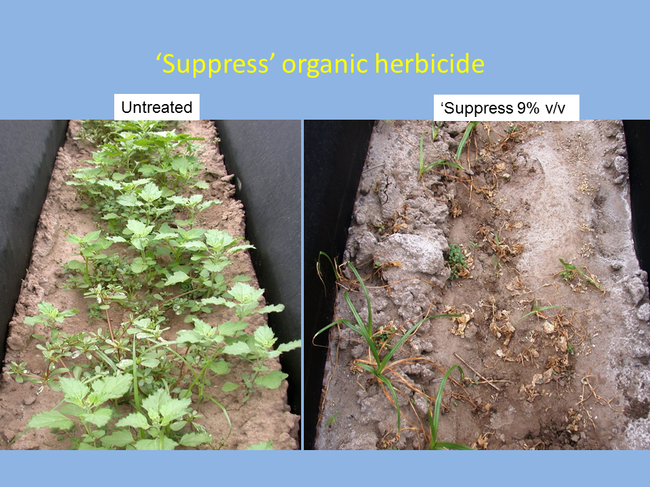
It looked like a good fit for organic plasticulture systems such as strawberry that have wet weedy furrows which are difficult to access with mechanical tools because of proximity to plastic. We placed a trial in a very weedy field that also had one of the SoCal classics–yellow nutsedge. 'Suppress' at 6 and 9% by volume was applied to well-established weeds just before strawberry planting.
The effects of application were noticeable in minutes. We learned that:
-
Both 6 and 9% rates provided nearly 100% control of common lambsquarter (predominant species) and other occasional broadleaved weeds.
-
About 10-15% of common purslane plants survived and yellow nutsedge seemed unaffected by application. However, biomass of both purslane and nutsedge were significantly reduced, suggesting that production of seed and tubers for the two weed species, respectively, may be delayed.
-
Good coverage was important and some of the horizontally–inclined leaves of broadleaf weeds likely intercepted the herbicide deposition to vertically inclined nutsedge shoots.
-
When we simulated drift by over-spraying strawberry, it responded just like any broadleaf perennial plant—the canopy wilted and dried but in 3 weeks the new leaves developed from the crown. This was also true for the neighboring bindweed that lost above ground canopy but had new growth within a month after 'Suppress' application.
-
Since perennial weeds or those in soil seedbank are not controlled, repeated applications are needed with obvious caution of avoiding the spray drift to the crop.
Attached Files: